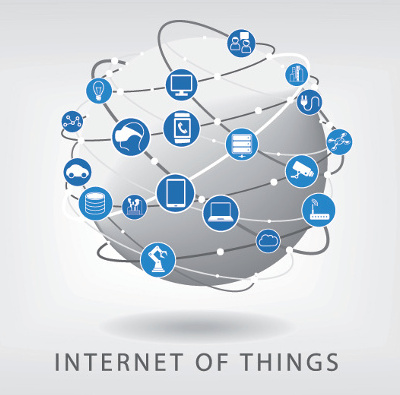Over the years, the internet has transformed from a small utility project into a living, breathing global ecosystem that has brought about a major transformation in the life of people, industries and even entire nations. The immense power, reach and ability of the internet to connect people, resources and ideas is something that has started to drive economy, influence policies and transform age-old traditions in many realms all over the world.
It is no surprise then that the concept of the internet has slowly but surely transformed into what is known today as the Internet of Things. The Internet of Things is an amazing concept which is bound to bring a further world of transformation to human life over the next couple of decades, and it has a special place in the scheme of things in the context of the present.
In recent times, the world has been plagued with various environmental concerns. From increased emissions and global warming to the gradual depletion of energy sources, we really are at a critical juncture where a change for the better needs to be made. The Internet of Things is one thing that can contribute majorly to this change. To begin with, it was only computer and individual users who were connected with the internet. Now, the realm of the internet is replete with billions of different devices, many of which are unique and innovative in terms of features and functionality. Although we are at a very early formative stage of the Internet of Things, it is clear that a worldwide network of different machines connected to one network can bring excellent environmental benefits to people, businesses and the world at large.
The Basics of the Internet of Things
To begin with, computers where the only devices that had the capability to send and receive data over a particular network. The Internet of Things is a concept which promotes the idea of devices which are not essentially computers can also be given the same abilities. This concept has been teased in the information technology industry from many years but it is only recently that the development of innovative hardware like sensors, wireless computing technologies, and capable cloud computing platforms that the concept has really started to take hold, creating a mesh of connected smart objects with numerous uses.
Examples of this technology include automobile. It can record and upload performance information to manufacturers servers, sensors attached to water supply pipes that calculate water flow, spot potential problems and help in conservation and electronic home appliances that are directly connected to their producing companies for better management and more pervasive control. Similar capabilities have already become popular in devices like smartphones and tablets, which also offer users with different sensing capabilities that can accurately gauge different types of movement, location etc.
How IoT and environment merges seamlessly
It is true that this connection and interconnection that the Internet of Things has to offer opens the doors to the collection and storage of important data. This data can be used by people, businesses, cities and towns and even entire countries to ensure smoother, more efficient management of its diverse natural resources. One of the most important and environmentally significant aspects of this capability is the monitoring and control of the use of energy. Many companies currently use networked sensors to look at potential problems with their equipment and supply lines and optimize their use of energy to ensure a safer, greener approach.
As more items in devices start getting connected to a particular facility, the managers can get hold of more and more relevant, important data and exercise are mind-boggling level of control over these facilities. The ability to exercise remote control on any or a group of the connected devices in such a network also gives manufacturers the power to conduct excellent preventive maintenance operations. Information from the sensors can be processed and used to ensure that machines deliver optimal performance, and to alert the relevant people when they stopped doing that so that the essential repairs and maintenance can be undertaken and energy-efficient, minimum waste usage can be set into motion.
In cities, towns and countries as well, The Internet of Things can provide a marked to efficiency and improve the general quality of life in many different ways. From monitoring weather conditions to picking out locations where there is the maximum amount of pollution, the use of this technology can come in handy when it comes to taking better care of the environment in both local and wider settings and making a difference to the worldwide environment in a constructive manner. Local governments can monitor effluent disposal, emissions and many more important parameters which can have a lasting impact on the immediate environment, and can take the appropriate measures when they find any of the regulations being flouted.
The Involvement of Big Data
Big Data and the Internet of Things are in essence partners in crime in the way that they facilitate the power and scope of each other. With the numerous concepts and technologies that the Internet of Things brings to the table, there is no wonder that the collection and analysis of large volumes of data go hand-in-hand with the involved processes. Organizations who are currently actively using network devices to monitor their processes, their raw materials and their supply routinely work with large volumes of data which can accurately tell them the location of potential problems, which can help in timely resolution. Similarly, the marriage of the two has been profusely in use in industries creating renewable energy where data from weather forecasts is combined from sensor data to accurately forecast the possible output of windmill farms. The potent combination helps operators to accurately adjust the pitch of the turbine blades in individual windmills to best harvest the power from the wind. Monitoring sensor data with data analytics has already found numerous uses in many different areas covering a whole range of applications from home conveniences to intricate medical procedures.
The Internet of Things and Environmental Sustainability
Having a lasting impact on the physical environment in a way that improves the quality of life of people and brings long-term good effects to overall weather conditions is one of the ways that The Internet of Things can transform the lives of people going into the next decade. Currently, there are cities where smart parking garages fitted with connected sensors are being used to control emission and bring down the level of air pollutants. Similarly, certain cities are in the process of installing sensors in streetlights to facilitate motion controlled operation, which can bring down power bills across the entire city. There are projects where municipalities are installing sensor fitted trash cans which send the message to garbage collectors once the cans are full and ready for clearance.
Using the Internet of Things in a constructive manner with long-term positive impacts on the environment include the use of this technology to measure emission levels from factories and keeping them under statutory control, aiding in agriculture in many different ways and even detecting forest fires in alerting the relevant authorities. Factories and manufacturing plants can also use carefully installed sensors to analyze heat, pressure and other important working variables so as to make the concrete strategy of inserting the right valves and prevent any leakage of energy, thereby contributing to the green movement.
Due to the extremely large and complex array of devices and hardware that is intrinsically connected with the Internet of things, the exact scope and capabilities of this paradigms shift in technology have not yet all been resolved or even thought of. It is a work in progress, and can be treated the same way as things used to be when the Internet first came into being. Even at its nascent stages, the amazing lure of this technology is already visibly front and center in many different sectors of retail, health and medical care and green initiatives such as electricity control, water control, emission control etc.
Our parting thoughts
Even at a very basic, personal level, this amazing new influx of technology has the potential to make a significant amount of difference both in an immediate sense and in the long-term when it comes to repairing the damage to our environment and protecting it for future generations. Companies worldwide are already in the process of brainstorming to find new, creative ways in which to use the Internet of Things in a capacity to make themselves green and more energy-efficient.
With more aware, smart and connected systems, major manufacturing and consumer goods companies in the world can also attempt to offer relevant extras to all their customers with the aim of better managing important factors like waste disposal and order fulfillment in a more energy efficient and cost-effective manner. These efforts are set to take a concrete shape in the next few years and looks to be on course to bring about a major positive change in the lives of people, as well as our environment that we all treasure.
Do write in to us and let us know your thoughts on this excitingly unique perception.


















































